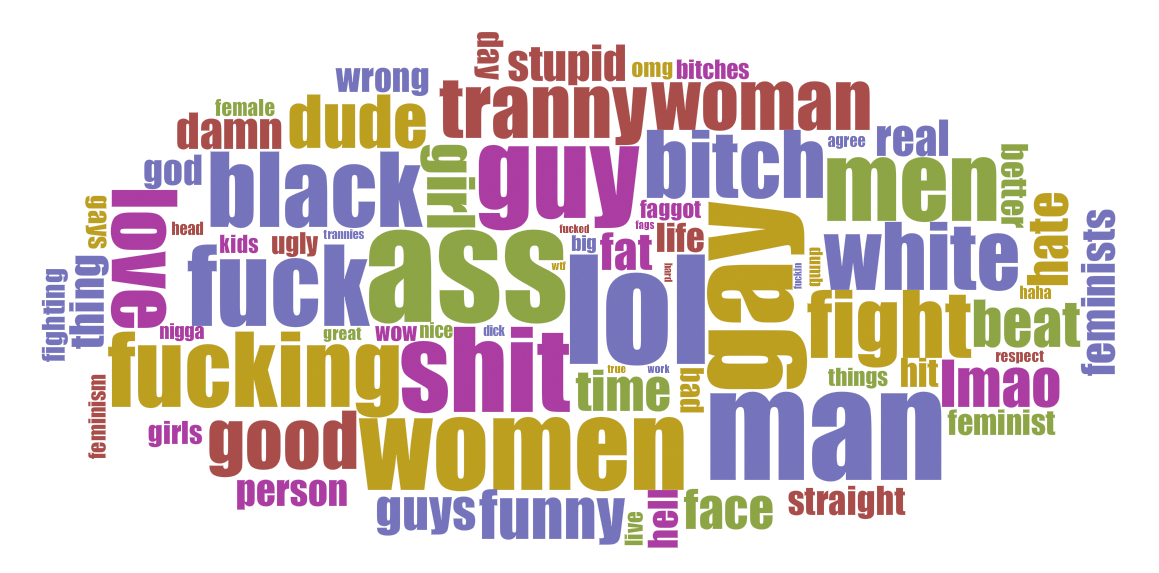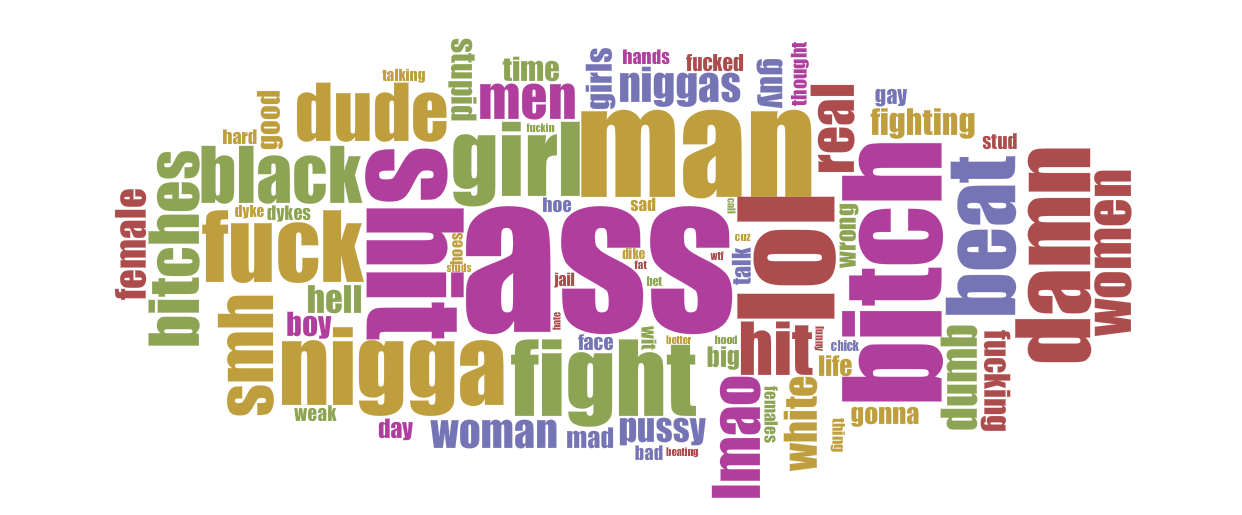FOR MORE INFORMATION: medialab@witness.org
Eyewitness videos provide a new source of data on the prevalence of transphobic violence
EXECUTIVE SUMMARY
Our newest project, “Capturing Hate,” studied viewer engagement with eyewitness videos that show transphobic violence filmed, shared, and engaged with as entertainment. The videos and audience engagement with them tell a powerful and disturbing story of the abusive and often life threatening environments that transgender and gender nonconforming people navigate daily.
Meeting the needs and understanding the issues facing transgender and gender nonconforming people is understudied because general population surveys that currently determine policy, social services and funding do not include questions about gender identity beyond the male and female binary. And, being uncounted means being overlooked. This project explores the untapped potential of viewer engagement with eyewitness videos as a way to fill that gap.

Our analysis of the engagement with those videos — including ratings, comments and how the videos are captured, titled and described — proves that abuse and discrimination against transgender people is widespread and undercounted. And, the content condones, or even encourages, violent acts against them. The existence of these videos and the volume of hateful engagement pose a direct threat to gender nonconforming people and compromise a positive and empowered representation of these communities.
However, we think that there are ethical and effective ways that these videos, though they are intended to cause harm, can be used for advocacy. Balancing the tensions between re-victimization and exploitation and the potent way video exposes abuse is an ongoing challenge. But, there is no doubting the singular impact of eyewitness video in exposing human rights abuses and empowering marginalized communities.
This report is the result of the 2016 WITNESS Media Lab Curation Fellowship.
To scope this project for a 15-week engagement, our study includes just a small sampling of the tens of thousands of videos we found that included transgender and gender nonconforming people as targets of assault, being threatened or intimidated, harassed, stalked, bullied, mocked, as targets in violent video games, portrayed as deviant on television shows and in film, and even murdered.
We studied viewer engagement only with videos that captured physical assault and we analyzed data from four very different sites. We included YouTube, where we found the most videos, but the content represents just a small segment of the platform’s total offerings. World Star Hip Hop and Fly Height are “shock” sites that solicit and promote these videos to drive traffic and to monetize as part of their business models. And, Live Leak, a video aggregator that promotes itself as a cutting edge news outlet known for breaking particularly gruesome content (e.g., the execution of Saddam Hussein).
Significantly absent from this study is the viewer engagement data from eyewitness videos hosted on Facebook, Twitter, Snapchat, and Vine. In our URL harvests we found thousands of video links on these platforms matching the search criteria, and tens of thousands of Facebook “likes” from platforms we did analyze. In test studies we found that most videos were uploaded to a hosting platform then shared to social media platforms furthering viewer engagement. Capturing and analyzing that data exceeded project resources in both cost and capacity.
Even with this small sample size, LGBTQ advocacy organizations we consulted were surprised by the number of eyewitness videos of violence against transgender people and stunned by how widely viewed and favorably rated they were. Most alarming are the vitriolic comments that are ongoing. We found videos posted years ago that are still being engaged with today.
This study tells the story of abuse suffered by transgender and gender nonconforming people in a unique and compelling way. Just as eyewitness video of police brutality in communities of color in the U.S. removed plausible deniability and launched a worldwide movement demanding transparency and change, it is our hope that these findings raise greater awareness and spark discussion of the cultural and political climate that is fostering discrimination and encouraging violence against transgender communities. And, we hope it creates a sense of urgency in making laws and policies that protect them.
videos of physical assaults found
search terms used
platforms / sites searched
89,233,760
VIEWS
number of times videos were watched
601,300
SHARES
number of times videos were shared
554,143
LIKES
number of times videos were liked by viewers
230,262
COMMENTS
number of times videos were liked by viewers


The search terms we used to source the greatest volume of video links almost exclusively captured incidents from urban environments involving people of color. We found the most videos on YouTube, which is not surprising given the platform’s enormous inventory. The videos most engaged with were found on, or originated from, “shock” entertainment sites. We acknowledge that the observations and conclusions in this report cannot fully capture the attitudes toward trans and gender nonconforming people in urban communities of color.
of total videos analyzed were found on YouTube
of YouTube videos categorized as entertainment or comedy
of total ratings were “likes”
of total views were on World Star Hip Hop
urban spaces, people of color
brand advertising with content
ongoing engagement
questioning gender, characteristics of “real” men and women
conflating sexual orientation and gender identity

These eyewitness videos document mistreatment of transgender and gender nonconforming people ranging from disrespect to murder. They show acts of violence against these communities that are not only tolerated, but encouraged and glorified.
The viewer engagement with these eyewitness videos reveal deeply held biases that intersect race, sex, class and gender identity. The attitudes expressed by viewers overwhelmingly blame gender nonconforming people for the violence and hatred perpetrated against them and expose a visceral rejection of people transgressing accepted notions of gender expression.
The ongoing engagement with these videos and the hostility expressed by viewers are compounding acts of discrimination that traumatize not only individual victims, but have broader consequences for gender nonconforming communities as a whole. They are a persistent reminder of the threat to the physical and emotional safety of all people who identify beyond the gender binary.
These eyewitness videos and their corresponding viewer engagement have real and sustained impact. A survivor’s loss of privacy and control over their public image in the aftermath often compounds injury with the loss of employment, housing, and personal relationships. The circulation and replaying of these traumatic events not only denies survivors a safe space to heal, but has a chilling effect on all gender nonconforming people.
The majority of the videos found are on YouTube, the only platform we studied that specifically mentions protection from hate speech that encourages or incites violence based on race, sexual orientation and gender identity; these videos clearly violate those policies. That they continue to be viewed and engaged with on YouTube despite those policies underscores the challenges of enforcing compliance and creating environments that encourage civil and non-discriminatory discourse.
That these videos were captured, shared and engaged with as entertainment indicates a real and imminent threat to transgender and gender nonconforming people. This report serves as a reminder that there is an urgent and ongoing need to document the abuse suffered by these communities so that laws and policies are instituted to protect them.
Finally, we think that these videos, and the viewer engagement data associated with them, show yet another way eyewitness video can be used for advocacy. Even though this content was intended to do harm, if used ethically, it documents discrimination and abuse in a way no other reports on transphobic violence has done to date. The study of eyewitness videos, coupled with an analysis of how viewers engage with them, is a powerful way to expose human rights abuses.
The existence of these videos and the volume of hateful engagement pose a direct threat to gender nonconforming people and compromise a positive and empowered representation of the community. We think that there are ethical and effective ways that individuals, public and private entities may use eyewitness videos intended to cause harm for advocacy.
-
Organizations and activists should use this data in their advocacy campaigns as a way of documenting abuse and discrimination against transgender and gender nonconforming people.
-
Use the findings from this research to raise greater awareness and spark discussion of the cultural and political climate that is fostering discrimination and encouraging violence against these communities.
- The websites that host videos, brands that advertise on them, and news outlets and activists that distribute them should consider their harmful effect. Ethical guidelines and technical tools can help expose abuse while protecting the privacy and security of victims of abuse.
-
Avoid the recirculation and descriptions of the videos that may can cause further and long-lasting harm to the survivors. If your intention is to expose or report on abuse, refer to the WITNESS Ethical Guidelines for the ethical use of eyewitness videos.
-
Platforms and sites that host these videos should increase transparency regarding policies and decisions that allow for the sharing and engagement with violent content that is not shared to expose, challenge or prosecute abuse, but is captured shared and engaged with as entertainment.
